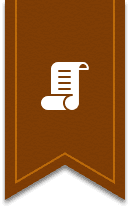Site Search
13Results for "March 27, 1784"
Stories

Princeton’s Founding Trustees
by Michael R. Glass | Colonial & Early National (1746-1820)
A firm majority of Princeton's founding trustees (sixteen out of twenty-three) bought, sold, traded, or inherited slaves during their lifetimes.

Samuel Stanhope Smith
by Nicholas Guyatt | Colonial & Early National (1746-1820)
Samuel Stanhope Smith, Princeton’s seventh president (1795-1812), was an early defender of the unity of mankind—arguing that environment, not innate biological differences, determined one’s race. His convictions, however, did not prevent him from owning slaves himself, and his teachings ultimately influenced Princeton alumni to establish the American Colonization Society.

Princeton and Slavery: Holding the Center
by Martha A. Sandweiss and Craig Hollander | Colonial & Early National (1746-1820), Antebellum (1820-1861), Civil War (1861-1865), Reconstruction to Present (1865-)
Princeton University, founded as the College of New Jersey in 1746, exemplifies the central paradox of American history. From the start, liberty and slavery were intertwined.

Princeton’s Fugitive Slaves
by Joseph Yannielli | Colonial & Early National (1746-1820), Antebellum (1820-1861)
Princeton residents published at least 28 newspaper advertisements for runaway slaves between 1774 and 1818. Each tells a unique story of courage and resistance in the face of tremendous odds.

Slavery at the President's House
by R. Isabela Morales | Colonial & Early National (1746-1820), Antebellum (1820-1861)
At least five Princeton presidents who served between 1756 and 1822 owned enslaved people who lived, worked—and on one occasion were auctioned off—at the President’s House on campus. During this period, the President’s House was the center of slavery at Princeton.
Primary Sources

Letter from Granville Sharp
March 27, 1784 | Colonial & Early National (1746-1820)
A letter from British abolitionist Granville Sharp to President John Witherspoon, discussing "Tracts against Slavery."

